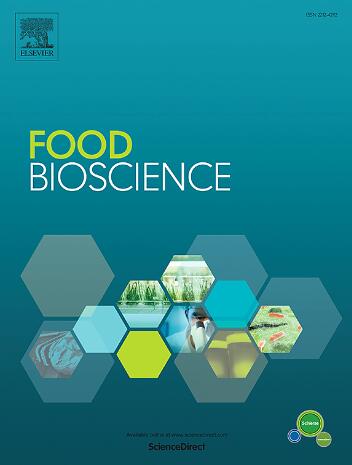Potential applications of antimicrobial peptides from edible insects in the food supply chain: Uses in agriculture, packaging, and human nutrition
IF 4.8
1区 农林科学
Q1 FOOD SCIENCE & TECHNOLOGY
引用次数: 0
Abstract
The search for ingredients from novel sources is gaining interest within the framework of promoting a more sustainable food system. The exploration of insects as a source of antimicrobial peptides could be useful for identifying compounds able to inhibit the growth of several microorganisms in different food applications. The purpose of this review is to recapitulate the literature on edible insect protein hydrolysates as a source of antimicrobial peptides, their mechanisms, and their use in the food industry by producing fortified products or edible coatings, and their use in agriculture. Scarce investigation has been carried out in the framework of their incorporation into the food system regarding their antimicrobial properties. Locusta migratoria, Hermetia illucens, and Tenebrio molitor are some of the most studied species. The literature available suggests promising results in areas such as fortification of foods or active packaging, based on the antimicrobial properties they might exert.
食用昆虫抗菌肽在食品供应链中的潜在应用:在农业、包装和人类营养方面的应用
在促进更可持续的食品体系框架内,人们越来越关注从新的来源中寻找配料。将昆虫作为抗菌肽的来源进行探索,有助于发现在不同食品应用中能够抑制多种微生物生长的化合物。本综述旨在概述有关可食用昆虫蛋白水解物作为抗菌肽来源的文献、其机理、在食品工业中通过生产强化产品或可食用涂层的用途,以及在农业中的用途。在将其纳入食品系统的框架内,有关其抗菌特性的研究很少。研究得最多的物种包括蝗虫、Hermetia illucens 和 Tenebrio molitor。现有文献表明,根据它们可能发挥的抗菌特性,在食品添加营养剂或活性包装等领域取得了可喜的成果。
本文章由计算机程序翻译,如有差异,请以英文原文为准。
求助全文
约1分钟内获得全文
求助全文
来源期刊

Food Bioscience
Biochemistry, Genetics and Molecular Biology-Biochemistry
CiteScore
6.40
自引率
5.80%
发文量
671
审稿时长
27 days
期刊介绍:
Food Bioscience is a peer-reviewed journal that aims to provide a forum for recent developments in the field of bio-related food research. The journal focuses on both fundamental and applied research worldwide, with special attention to ethnic and cultural aspects of food bioresearch.
 求助内容:
求助内容: 应助结果提醒方式:
应助结果提醒方式:


